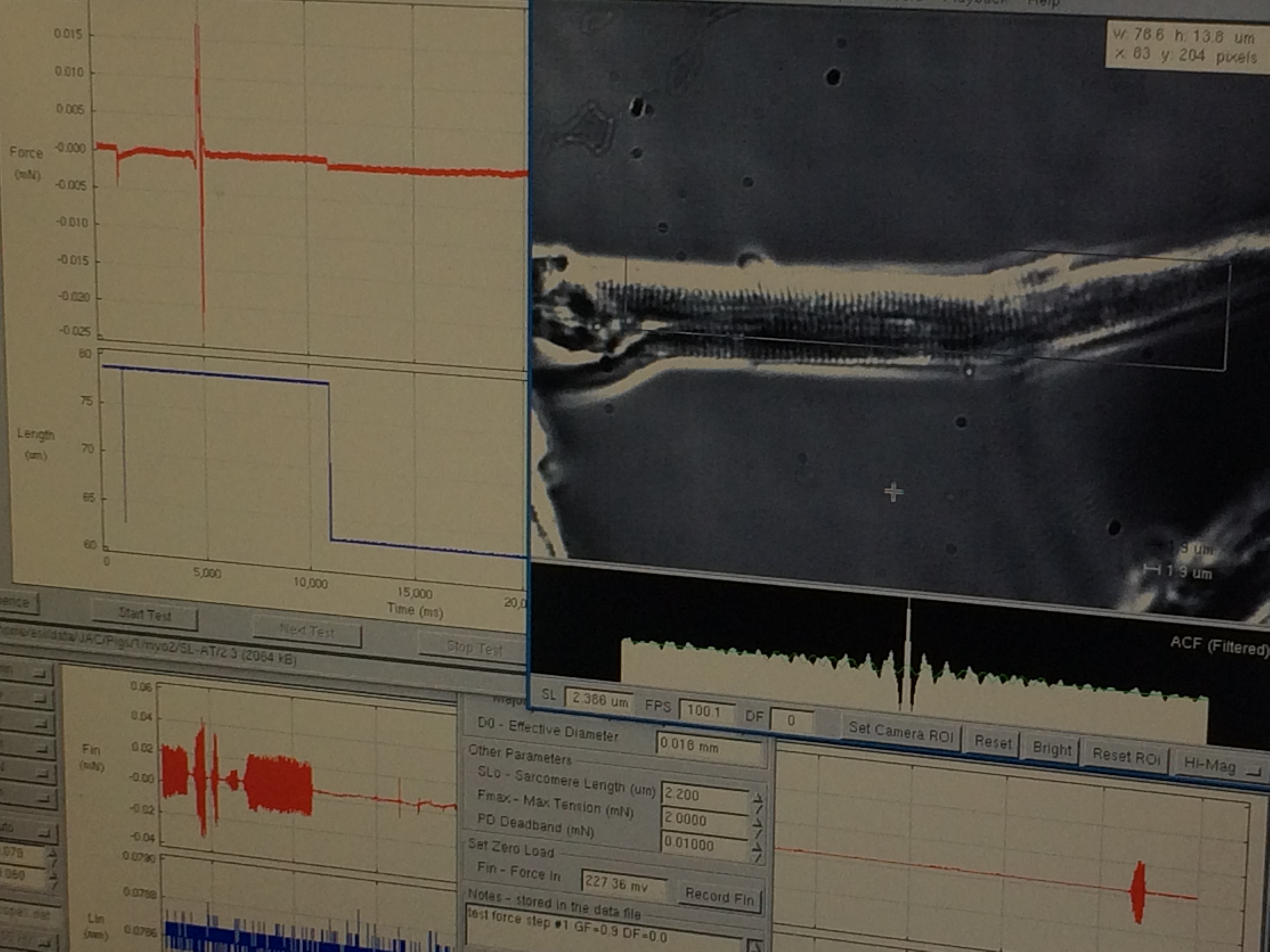Myocardial remodelling and valvular heart disease

The focus of this research line is to uncover the mechanisms behind myocardial remodelling and reverse remodelling associated not only to valvular diseases but also to other sorts of cardiomyopathies and pharmacologic interventions. For instance, long-standing aortic stenosis (AS) triggers myocardial remodelling, a process influenced by the hemodynamic load, the neurohumoral activation and other factors still under research. The treatment for these patients is valve replacement, which usually results in an improvement of overall cardiac pump performance and diastolic function. However, an intriguing aspect of AS is the diversity of ventricular responses to the same degree of pressure-overload as well as to overload relief subsequent to valve replacement. The knowledge about cellular and molecular mechanisms underlying the (in)completeness of RR process in patients after valve replacement are not yet well understood, mostly due to the impossibility to access myocardial tissue and study its changes during remodeling of AS patients. To overcome this limitation, murine models have played a major role in advancing our understanding of the molecular mechanisms involved in the adverse LV remodeling and RR in pressure overload-induced HF.
This research line provides a fundamental support to all clinical research activities inasmuch as it centralizes sample storage and cataloguing as well as all functional, molecular and histology studies, but also because it permits ex vivo functional evaluation of patients’ myocardial muscle strips and cardiomyocytes. Experimental functional evaluation ex vivo and molecular and histological studies in patients’ samples are fundamental to strengthen clinical and imaging results and constitute a further step towards unravelling disease mechanism at the tissue and cell level. Therefore, this research line aims to expand clinical database and plasma and tissue sample bank of patients undergoing cardiac surgery. Patient follow-up is continuously on-going.
As part of the translational research continuum, this research line tests new pharmacological therapies in small animal models and will provide animal cardiovascular disease models for imaging studies whenever considered important to substantiate clinical findings.
Collaborations
The group has proven itself as a national reference and a strong international competitor in basic and translational cardiovascular research over the past years having established important national and international collaborations which enabled the participation in a European Union funded international research consortium and pharmacological testing in animal models in partnership with international pharmaceutical companies (Pfizer, Actelion, Boehringer ingelheim, Orion and Pluristem).
National scientific collaborations:- Perpétua Pinto-do-Ó, I3S, Porto
- Fátima Carneiro, I3S, Porto
- Cristina Gavina, Hospital Pedro Hispano, Matosinhos
- Rui Vitorino & Rita Ferreira, Universidade de Aveiro, Aveiro
- Lino Ferreira, UC-Biotect & CNC, Coimbra
- Henrique Girão, Faculdade de Medicina da Universidade de Coimbra e IBILI, Coimbra
- Francisco Enguita, IMM, Lisboa
- Fausto Pinto, Faculdade de Medicina da Universidade de Lisboa, Lisboa
- Patrícia Alves & Paula Alves, ITQB, Oeiras
- Juan Ramon Juanatey, Santiago de Compostela, Spain
- Javier Diez e Arantxa Gonzalez, Pamplona, Spain
- Jorge Allegre-Cebollada, Madrid, Spain
- Fayez Zannad, Nancy, France
- Stephane Heymans, Leuven, Belgium
- Walter J Paulus, VUMC, Amsterdam, The Netherlands
- Jolanda van der Velden, VUMC, Amsterdam, The Netherlands
- Leon de Windt & Paula da Costa Martins, Maastricht, The Netherlands
- Dirk Dunker, Rotterdam, The Netherlands
- Nazha Hamdani, Bochum, Germany
- Stephano Perlini, Padova, Italy
- Zoltan Papp & Atilla Borbely, Debrecen, Hungary
- Ralph Knoll, Karoliska Instituet, Sueden
- Barry Fanburg, Tufts Medical Center, Boston, USA